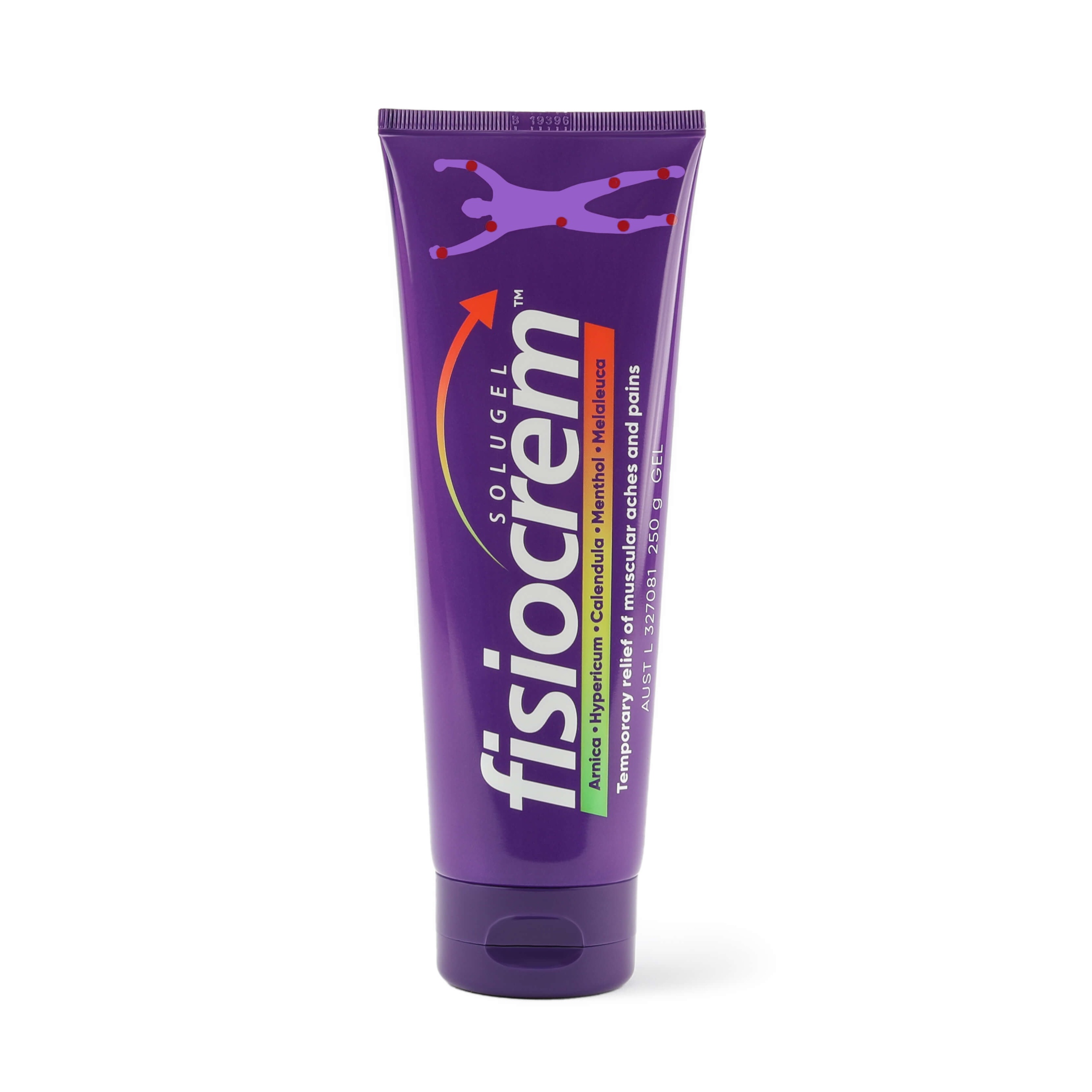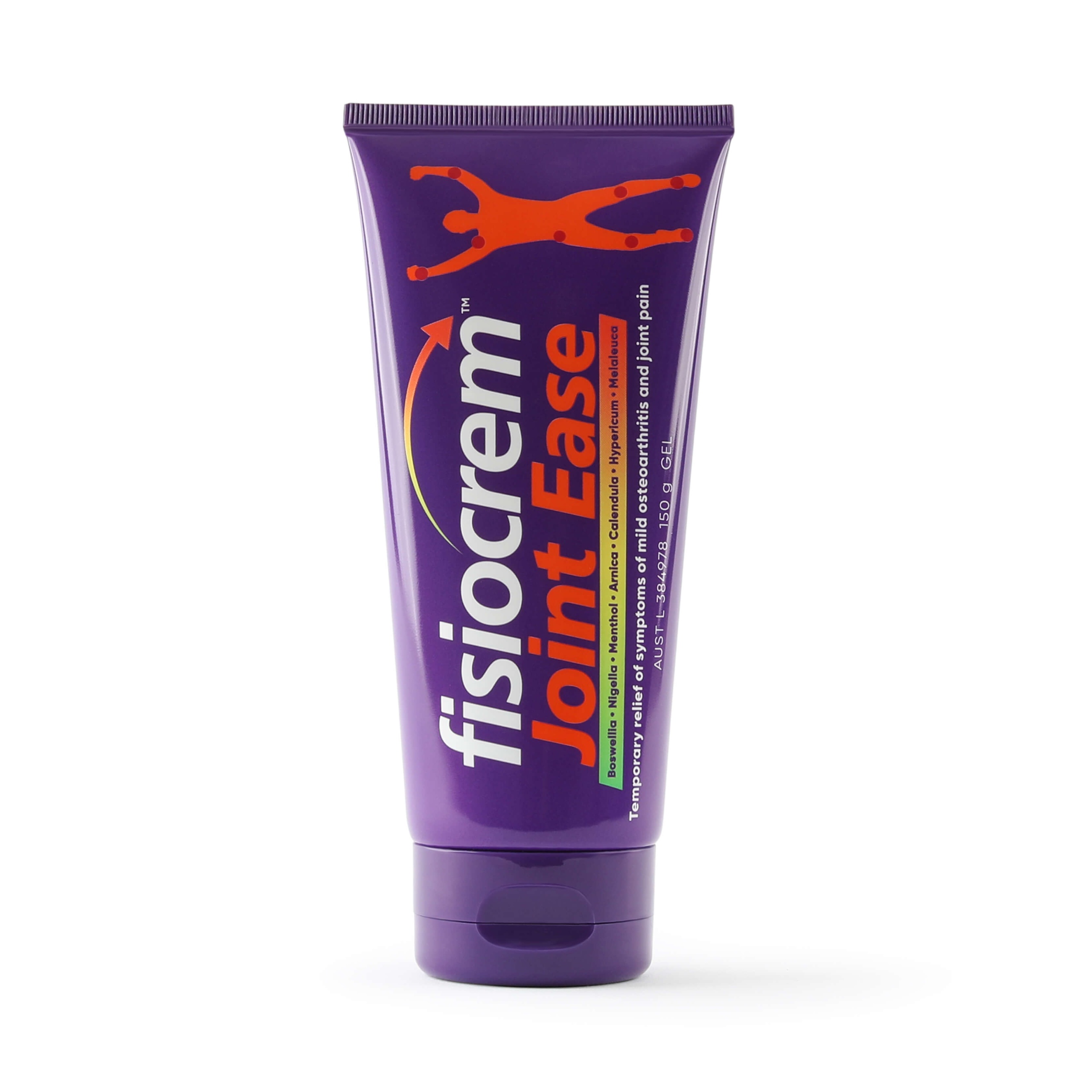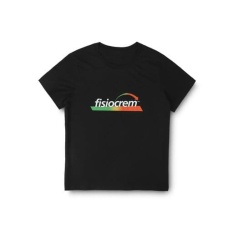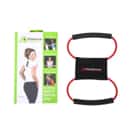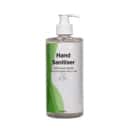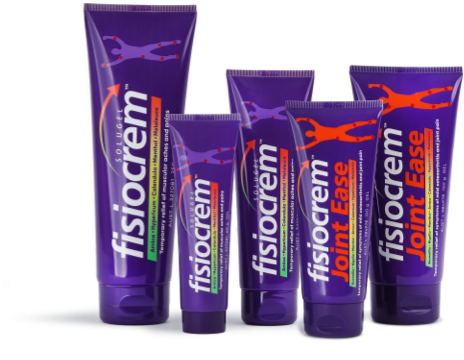Meet fisiocrem sponsored athlete Amy, who loves to push her limits both physically and mentally. She finds herself seeking new challenges to grow in all aspects of her life.
Currently, Amy’s favourite activity is marathon running. She finds fulfillment in the challenge of completing a 42.2km race.
In 2023, Amy’s main goal was to enhance her parkrun time and performance. Although she didn’t achieve all her goals, she gained valuable insights into the significance of consistency, patience, and resilience. Each race and training session provided new lessons about her capabilities, contributing to her growth as a stronger and more experienced runner.
Amy is registered for this year’s fisiocrem GC30 and attempting to complete the 15km race distance in May. She is also planning to pace the 2hr marker in the Sydney Marathon. To ensure her success, Amy’s training plan includes speed work, long runs, strength training, and sufficient rest.
She is also prioritising injury prevention and recovery to keep her body strong and healthy throughout 2024.
Amy’s most significant fitness accomplishment was qualifying for the Boston Marathon. This feat required eight months of focused training, discipline, and perseverance. She followed a structured training regimen, progressively increasing her mileage with specific speed workouts and long runs. This assisted her mentally and physically for the race. Amy also achieved a time with a comfortable buffer that allowed her entry into the Boston Marathon the following year.
AMY’S TOP RECOVERY TIPS
Amy’s top recovery tips are, “Proper hydration, nutrition, sleep, and active recovery techniques such as foam rolling, stretching, and massages.”
Amy Cheung
Relieve Inflammation: 10 Effective Tips for Muscle & Joint Pain Management
Relieve inflammation with our comprehensive guide to managing muscle and joint pain effectively.
What causes inflammation in the body? Numerous factors can contribute to inflammation, with common culprits including mild arthritis, altered muscle usage, or injury (Tidball, 2005). Signs include redness, swelling, heat, pain and a loss of function (Hawiger et al., 2019).
Coping with muscle and joint pain can profoundly affect your overall quality of life. Fortunately, there are effective ways to manage inflammation and alleviate discomfort. Discover 10 actionable tips to alleviate discomfort and enhance your well-being.
1. Embrace the Power of Anti-Inflammatory Foods
Nutrition is a considerable and changeable risk factor that can cause inflammation (Hess et al., 2021).
Incorporating dietary components like fibre, antioxidants, and omega-3 fatty acids can effectively reduce inflammation symptoms such as swelling and pain (Hess et al., 2021). Focus on incorporating fruits, berries, vegetables (leafy greens and tomatoes), nuts and whole grains into your diet (Wu et al., 2012).
Steer clear of saturated fats and sodium as they can lead to increased levels of inflammation (Hess et al., 2021).
2. Stay Hydrated for Joint Health
Water is a major component of body fluids. These include that of blood and synovial joint fluid, both of these components perform vital functions in the body (Benelam et al., 2010).
Water in synovial fluids lubricates and cushions joints, making movement smoother and reducing friction (Benelam et al., 2010).
Individuals’ water needs vary based on factors like body size, composition, environment, and physical activity levels.
3. Regular Exercise
Physical activity can help to protect against numerous diseases (Ford, 2001). Engaging in regular physical exercise reduces the risk of obesity, and thus reduces inflammation in the body (Wilund, 2007)(Metsios et al., 2020).
Low-impact activities like swimming, cycling, and yoga can help strengthen muscles, improve flexibility, and reduce stiffness. Just be sure to listen to your body and avoid activities that exacerbate your pain.
4. Get Sufficient Quality Sleep
Inadequate sleep or sleep deprivation can cause an inflammatory response. Changes in sleep patterns from lifestyle, aging, or illness can lead to more inflammation, affecting overall health (Simpson et al., 2007).
Be sure to get adequate sleep and establish healthy sleep habits. It can help lower inflammation and boost your overall well-being (Simpson et al., 2007).
Aim for seven to nine hours of quality sleep each night to allow your body ample time to repair and recover. Establish a relaxing bedtime routine and create a comfortable sleep environment to promote restorative rest.

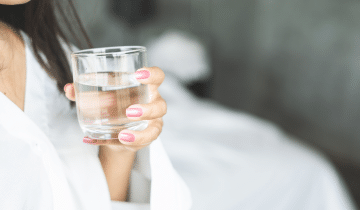
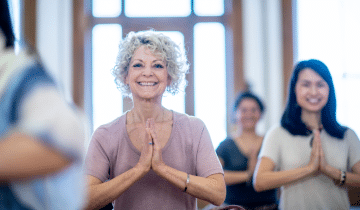

5. Incorporate Supplements Wisely
Certain supplements can complement your efforts and assist with the treatment of inflammation.
Glucosamine has been a supplement widely used to treat mild osteoarthritis and joint diseases characterised by cartilage degeneration. Glucosamine suppresses inflammatory cell activation thus helping to reduce inflammation (Nagaoka et al., 2011).
Chondroitin sulfate helps to reduce joint swelling and creates an anti-inflammatory effect within the body (Iovu et al., 2008).
Turmeric is a supplement traditionally used for its anti-inflammatory properties (Lantz et al., 2005). Turmeric can help relieve joint & muscle inflammation.
Consulting with a healthcare professional before adding any new supplements to your regimen is essential.
6. Practice Mindfulness and Stress Reduction Techniques
Stress can cause inflammation in the body. Doing activities like meditation, deep breathing, and muscle relaxation can lower stress and make you feel more relaxed (Black et al., 2002).
Engaging in activities you enjoy, like hobbies or being outdoors, can you a mental break and ease stress.
7. Maintain a Healthy Weight
Inflammation is closely linked to obesity. Carrying excess weight puts added stress on your joints, contributing to inflammation and pain. By maintaining a healthy weight, you can reduce the burden on your joints and alleviate discomfort (Rodríguez-Hernández et al., 2013).
Adopt a healthy balanced diet and incorporate regular exercise into your routine to help maintain a healthy weight.
8. Cold Therapy
Cold therapies can help reduce pain, promote blood flow and reduce inflammation whilst delaying the onset of muscle soreness (Malanga et al., 2014).
9. Consider Physical Therapy
Physical therapy can be incredibly beneficial for managing inflammation and improving muscle mass and joint function. A physical therapist can help customise an exercise program that helps to prevent and reduce inflammation (Addison et al., 2012).
10. Topical rubs
Topical analgesic rubs are an inflammation treatment option that can help relieve pain, and swelling and promote recovery (Ramon et al., 2022).
fisiocrem Solugel helps to relieve inflammation of muscles and improve body tissue repair. The synergetic action of fisiocrem Solugel’s active ingredients (Arnica, Hypericum, Calendula, Melaleuca and Menthol) help to relieve pain, stimulate blood flow and reduce swelling.
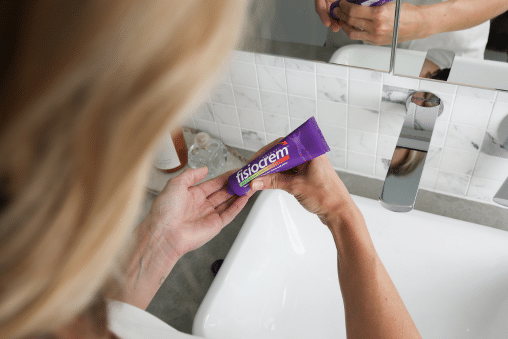
fisiocrem Joint Ease helps to relieve mild joint inflammation and helps to promote healthy joint function. fisiocrem Joint Ease relieves mild osteoarthritis symptoms and is available online or at pharmacies, including Chemist Warehouse.
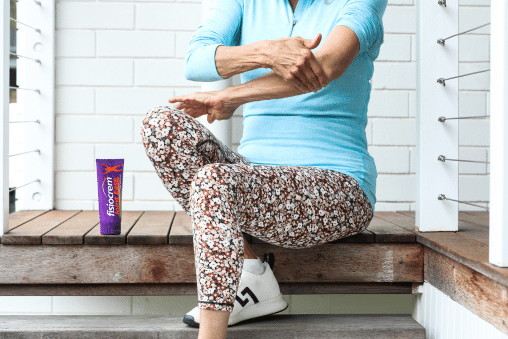
Dealing with muscle and joint pain caused by inflammation can be challenging, but it’s not impossible. By incorporating some of the above tips you can effectively manage inflammation and ease discomfort.
Consult a healthcare professional before making significant changes to your routine. Stay consistent and patient as you aim for relief.
Citations
- Addison, O., LaStayo, P., Dibble, L., Marcus, R. (2012). Inflammation, Aging, and Adiposity Implications for Physical therapists. Journal of geriatric physical therapy 35(2), 86-94.
- Benelam, B., & Wyness, L. (2010). Nutrition Bulletin, 35(1), 3–25.
- Black, P., Garbutt, L. (2002). Stress, inflammation and cardiovascular disease. Journal of psychosomatic research, 52(1), 1-23.
- Ford, E. (2001). Does Exercise Reduce Inflammation? Physical Activity and C-reactive protein among U.S. Adults. Epidemiology, 13(5), 561-568.
- Hawiger, J., & Zienkiewicz, J. (2019). Scandinavian Journal of Immunology, 90(6).
- Hess, J., Stephensen, C., Kratz, M., Bolling, B. (2021). Advances in nutrition, 12.
- Iovu, M., Dumais, G., Souich, P. (2008). Anti-inflammatory activity of chondroitin sulfate. 16(3), S14-S18.
- Lantz, R., Chen, G., Solyom, A., Jolad, S., Timmermann, B. (2005). The effects of turmeric extracts on inflammatory mediator production. Phytomedicine, 12 (6-7), 445 – 452.
- Malanga, G. A., Yan, N., & Stark, J. (2014). Postgraduate Medicine, 127(1), 57–65.
- Metsios, G., Moe, R., Kitas, G. (2020). Exercise and inflammation, 34(2).
- Nagaoka, I., Igarashi, M., Hua, J., Ju, Y., Yomogida, S., Sakamoto, K. (2011) Recent aspects of the anti-inflammatory actions of glucosamine. Carbohydrate Polymers, 84(2), 825-830.
- Ramon et al Ortho & Rheum Open Access J 20(1): OROAJ.MS.ID.556028 (2022) This study was funded by fisiocrem
- Rodríguez-Hernández, H., Simental-Mendía, L. E., Rodríguez-Ramírez, G., & Reyes-Romero, M. A. (2013). Obesity and Inflammation: Epidemiology, Risk Factors, and Markers of Inflammation. International journal of endocrinology.
- Simpson, N., Dinges, D. (2007). Sleep and inflammation. Nutrition reviews, 65(3), S244-S252.
- Tidball, J. G. (2005). American Journal of Physiology-Regulatory, Integrative and Comparative Physiology, 288(2).
- Wilund, K. (2007). Is the anti-inflammatory effect of regular exercise responsible for reduced cardiovascular disease? Clinical science, 112(11), 543-555.
- Wu, X., & Schauss, A. G. (2012). Journal of Agricultural and Food Chemistry, 60(27), 6703–6717.
Muscle and joint pain is a common complaint and a major health problem affecting the population (Bergman, 2007). This pain can significantly impact a personals daily life and activities. Pain can happen from exercise, getting older, or health problems.
This pain typically creates worse functional outcomes and can negatively impact a person’s quality of life (Kidd, 2006). Dealing with muscle and joint pain can be challenging, whether it’s a dull ache, sharp pain or persistent discomfort. This article discusses ways to reduce muscle and joint pain so you can move easily and without discomfort.
Introduction
Before diving into remedies, it’s essential to understand the root causes of muscle and joint pain.
Muscle and joint pain, also called musculoskeletal pain, can happen all over the body for different reasons. Some factors that can be a cause of this pain include injuries, overuse, inflammation, medical conditions, and lifestyle choices (Schaible, et al., 2009)(Kidd, 2006).
This pain can affect anyone, from athletes to office workers. It can range from mild discomfort to severe agony. Identifying the underlying cause can help tailor treatment approaches for effective relief.
Common Causes of Muscle and Joint Pain
1. Injuries
Acute injuries like sprains & strains are common sporting injuries that can have varying severity (Järvinen et al., 2000). Other injuries that can cause significant muscle and joint pain include fractures, dislocations, contusions and lacerations (Järvinen et al., 2007). These injuries often occur during sports activities, accidents, or sudden movements that put excessive stress on the musculoskeletal system.
2. Overuse & strain
A primary reason for muscle and joint pain is overuse and strain. Overload as a result of poor technique, or repetitive movements performed incorrectly can result in microtrauma & muscle imbalance (Järvinen et al., 2007). Excessive physical activity, insufficient recovery, and under-preparedness can lead to muscle fatigue, micro-tears, and inflammation, resulting in pain and discomfort (Aicale et al., 2018).
3. Inflammation
Infection, injuries, or inflammatory conditions in the body can cause muscle and joint inflammation (Sherwood et al., 2004). The inflammatory response triggers pain receptors, causing discomfort and tenderness.
4. Mild Arthritis/Mild Osteoarthritis
Mild arthritis and mild osteoarthritis are a common cause of joint pain. Mild osteoarthritis is a degenerative disease characterised by damage to the cartilage of the joints. Mild arthritis can lead to stiffness, swelling, tenderness and reduced mobility of the joint (Neugebauer et al., 2007).
Symptoms of Muscle and Joint Pain
- Swelling – a swollen feeling in the joints or tissues of the body (Muhammad, 2007). Swelling also known as edema, is a build-up of fluid trapped in the body’s tissues (Trayes et al., 2013). Swollen joints and muscles may appear red, warm and tender to the touch, indicating an inflammatory response.
- Stiffness – joint stiffness commonly occurs after periods of inactivity or prolonged immobilisation. Stiffness in the joints is a common symptom associated with mild arthritis (Kean, et al., 2004).
- Redness – inflamed or irritated tissues can appear red signalling increased blood flow to the affected area.
- Limited movement – muscle and joint pain can make it hard to move and do daily tasks. Reduced flexibility and mobility may worsen with time if the proper treatment and management do not occur.
Treatment options for muscle and joint pain
Doctors may prescribe medications like NSAIDs (ibuprofen), and muscle relaxants to ease pain, reduce swelling, and improve mobility (Cohen et al., 2004).
Physical therapy – programs from licensed physical therapists can help strengthen muscles, improve flexibility and correct movement patterns, reducing pain and preventing further injuries (Stucki, 2000).
Topical analgesics – topical joint & muscle pain relief creams and gels can help with localised pain. Relieving joint and muscle pain, aches and stiffness (Van Laar et al., 2012).
Severe joint pain may require surgery. Health professionals may recommend procedures like joint replacement or tendon repair to improve function and reduce pain (Sinusas et al, 2012).
Application of cold and heat therapy within 1hr post-exercise can reduce muscle pain and soreness (Wang et al., 2021). Heat therapy can help relieve mild joint pain and discomfort, and improve range of motion in winter (Hyun-Sook, 1995).
Other treatments like acupuncture, chiropractic care, and massage can help with muscle and joint pain relief (Parkinson et al., 2012). Massage therapy can help decrease pain, promote relaxation, increase blood flow, and relieve tension in the muscles (Frey Law et al., 2008).
If you experience aches and pains in muscles and joints, fisiocrem offers topical pain relief solutions.
fisiocrem Solugel - Muscle pain relief cream
fisiocrem Solugel is a muscle pain relief cream that contains menthol naturally derived active ingredients. fisiocrem is suitable for all muscle pain including calf muscle pain & neck muscle pain.
fisiocrem Solugel stands out as one of the best selling muscle pain relief creams in Australia. Find fisiocrem Solugel in your local pharmacy, Coles, Woolworths and Chemist Warehouse.
*IQVIA scan data 29/02/2024 showcases that fisiocrem Solugel is one of the most popular brands according to sales data in pharmacy.
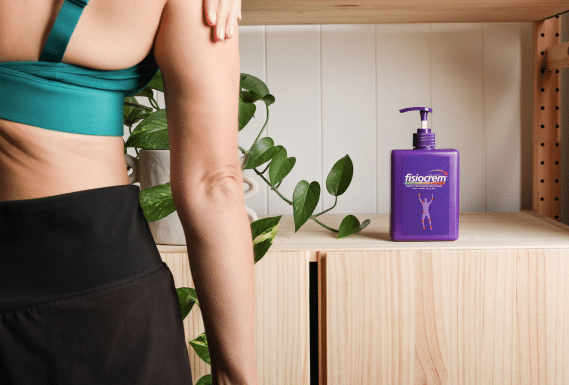
fisiocrem Joint Ease - Mild joint pain relief cream
fisiocrem Joint Ease helps temporarily relieve symptoms of mild arthritis, mild osteoarthritis, and mild joint pain.
fisiocrem Joint Ease is a joint pain relief cream that helps to relieve joint stiffness and pain and promotes healthy joint mobility.
Find fisiocrem Joint Ease at your local pharmacy & Chemist Warehouse.
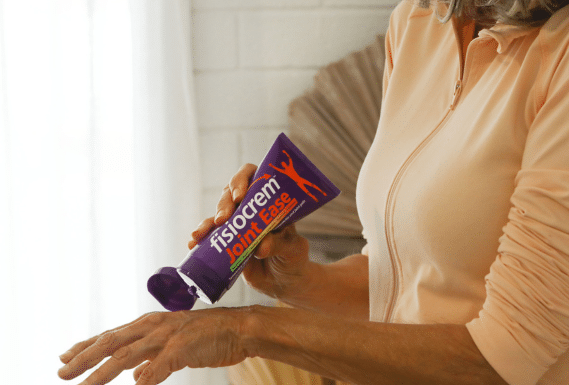
Joint and muscle pain can make simple tasks difficult, thus highlighting the need for effective pain management strategies.
Lifestyle Changes & Preventative Measures to
Manage Muscle and Joint Pain
Balanced Diet & Hydration
Eating a balanced diet with fruits, vegetables, whole grains, and lean proteins can reduce inflammation in the body. Hydration is important to help make the fluid that cushions and lubricates our joints, called synovial fluid (Benelam et al., 2010). Hydration is also beneficial for muscle strength recovery and overall cellular function (Harris et al., 2019).
Healthy Weight
Maintaining a healthy weight with a good diet and exercise can reduce strain on the body and improve overall health. If you are overweight or obese, it can cause pain in your muscles and joints. This can lead to worse joint health and more problems with the lower extremities of the body like the ankles, feet, and knees (Smith et al., 2013). A strong association exists with being overweight/obese with mild osteoarthritis pain and disability (Tukker et al., 2008).
Posture & Ergonomics
Good posture and ergonomic workspaces can help prevent muscle strain, discomfort, and musculoskeletal issues.
Regular Exercise
Exercise helps strengthen muscles, improve heart health, reduce pain and stiffness, and lower injury risk. Exercise is important for overall health and well-being. Stretching and flexibility exercises can help reduce pain, improve mobility, enhance muscle flexibility, and decrease stiffness and tightness (Behm et al., 2021).
Rest & Recover
Resting and allowing your body to recover between workouts is crucial for preventing injuries, minimising muscle fatigue, and facilitating tissue repair and regeneration.


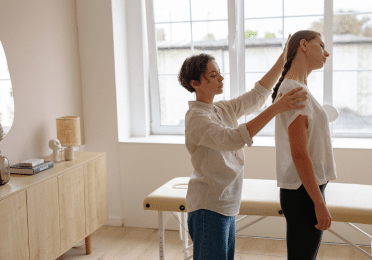
In summary, dealing with joint and muscle pains is a widespread issue that can greatly affect everyday activities. By having an understanding of muscle and joint pain, individuals can take proactive steps to manage their symptoms, improve their quality of life, and prevent future problems.
Remember to consult with a healthcare professional for advice and treatment recommendations based on your specific needs.
Citations
- Aicale, R., Tarantino, D., & Maffulli, N. (2018). Overuse injuries in sport: a comprehensive overview. Journal of Orthopaedic Surgery and Research, 13(1).
- Behm, D. G., Kay, A. D., Trajano, G. S., Alizadeh, S., & Blazevich, A. J. (2021). Effects of Acute and Chronic Stretching on Pain Control. Journal of clinical exercise physiology, 10(4), 150-159
- Benelam, B., Wyness, L. (2010). Hydration and health: a review. Nutrition Bulletin, 35(1), 3-25.
- Bergman, S. (2007). Management of musculoskeletal pain. 21(1), 153 – 166.
- Cohen, S. P., Mullings, R., Abdi, S., & Warltier, D. C. (2004). The Pharmacologic Treatment of Muscle Pain. 101, 495-526.
- Frey Law, L., Evans, S., Knudtson, J., Nus, S., Scholl, K., Sluka, K. (2008). Massage Reduces Pain Perception and Hyperalgesia in Experimental Muscle Pain: A Randomized, Controlled Trial. The journal of pain, 9(8), 714 – 721.
- Harris, P., Keen, D., Constantopoulos, E., Weninger, S., Hines, E., Koppinger, M., Khalpey, Z. (2019). Fluid type influences acute hydration and muscle performance recovery in human subjects. Journal of the international society of sports nutrition, 16 (1).
- Hyun-Sook, K. (1995). Journal of muscle & joint health, 2(2), 147-159.
- Järvinen, T., Järvinen, T., Kääriäinen, M., Aarimaa, V., Vaittinen, S., Kalimo, H., Järvinen, M. (2007). Muscle injuries: optimising recovery. 21(2), 317-331.
- Järvinen, T., Kääriäinen, M., Järvinen, M., Kalimo, H. (2000). Muscle strain injuries. Nonarticular rheumatism, sport-related injuries, and related conditions, 12(2), 155-161.
- Kean, W. F., Kean, R., & Buchanan, W. W. (2004). InflammoPharmacology, 12(1), 3–31.
- Kidd, B. (2006). Pain, 123(1), 6-9.
- Muhammad, Y. (2007). Role of central sensitization in symptoms beyond muscle pain, and the evaluation of a patient with widespread pain. 21(3), 481-497.
- Neugebauer, V., Han, J. S., Adwanikar, H., Fu, Y., & Ji, G. (2007). Molecular Pain, 3.
- Parkinson, L., Sibbritt, D., Bolton, P., van Rotterdam, J., & Villadsen, I. (2012). Clinical Rheumatology, 32(2), 167–180.
- Renström, P., & Johnson, R. J. (1985). Overuse injuries in sport. Sports Medicine, 2(5), 316–333.
- Schaible, H.-G., Richter, F., Ebersberger, A., Boettger, M. K., Vanegas, H., Natura, G., Vazquez, E., Segond von Banchet, G. (2009). Experimental Brain Research, 196(1), 153–162.
- Sherwood, E., Toliver-Kinsky, T. (2004). Mechanisms of the inflammatory response. Best practice & research clinical Anaesthesiology, 18(3), 385-405.
- Sinusas, K. (2012). Diagnosis and Treatment.
- Smith, S. M., Sumar, B., & Dixon, K. A. (2013). Musculoskeletal pain in overweight and obese children. International Journal of Obesity.
- Stucki, M. O. (2000). Scandinavian Journal of Rheumatology, 29(113), 78–85.
- Trayes, K. P., Studdiford, J. S., Pickle, S., & Tully, A. S. (2013). Edema: Diagnosis and Management. 88(2), 102-110.
- Tukker, A., Visscher, T., Picavet, H. (2008). Overweight and health problems of the lower extremities. Public health nutrition.
- Van Laar, M., Pergolizzi, J. V., Mellinghoff, H.-U., Merchante, I. M., Nalamachu, S., O’Brien, J., Perrot, S., Raffa, B. (2012). 6, 320-330
- Wang, Y., Li, S., Zhang, Y., Chen, Y., Yan, f., Han, L., Ma, Yuxia. (2021). Heat and cold therapy reduce pain in patients with delayed onset muscle soreness: A systematic review and meta-analysis of 32 randomized controlled trials. Physical therapy in sport, (48), 177-187.
Meet fisiocrem sponsored athlete Challise, a mother of three and a swimming instructor on the Gold Coast. She finds joy in travelling to discover the wonders of the natural outdoors.
Challise’s preferred sport is long-distance running, but following a recent back injury, she has reintroduced swimming into her routine as a form of cross-training. Swimming helps her maintain cardiovascular fitness while alleviating pressure on her discs and vertebrae. Additionally, she enjoys paddle boarding and kayaking alongside her husband and children.
In 2023, Challise faced an exceptionally challenging year, enduring three severe injuries: a ruptured ankle, a broken elbow, and a ruptured UCL, along with severe kidney damage. Despite these setbacks, Challise remained resilient and aspired to complete several hiking trips around Tasmania. This included an 82-kilometre track ultra with her elbow immobilised in a brace. Throughout her recovery, she prioritised maintaining movement to nurture both her mental and physical well-being, ensuring a smooth return to activity when the time was right. She says, “I try to laugh and have a great time in whatever I’m doing.”
Challise eagerly anticipates 2024, as she plans to integrate swimming into her event schedule. By incorporating a variety of individual running, swimming, and aquathon events, she aims to diversify her training regimen. To avoid surgery for her back injury, Challise is diligently focusing on building stability. She has enlisted the help of a colleague for regular swim coaching and is making thoughtful decisions regarding her running training and event participation. Additionally, she is paying close attention to her nutrition to support her fitness goals.
Additionally, she has enlisted the help of a colleague for regular swim coaching and is making thoughtful decisions regarding her running training and event participation.
Challise says her biggest supporters are “My family, along with my eldest child who has a physical disability. I try to lead by example in every moment I have.”
CHALLISE’S TOP RECOVERY TIPS
Challise’s top recovery tips are “Listen to your body, challenge it appropriately, and nourish it with necessary rest and recovery.”
Challise Curgenven
Meet fisiocrem sponsored athlete Sam, a dynamic 22-year-old track and field athlete. He’s always been involved in the sport ever since 2015 during the ‘Little Athletics’ tournament.
Sam has had a lifelong passion for racing, relishing in the thrill of speed and nurturing a love for running since early childhood. Each year he aims to gradually enhance his overall speed. He says “on a daily basis, I motivate myself in both personal and sport related challenges.”
In 2017, just two weeks before nationals, a hamstring injury set him back during the Noosa Gift. He was forced to remain on the sidelines, which affected him mentally. Bouncing back in 2021, Sam found his confidence and clocked a personal best time of 10.78 seconds in the 100m. He then went onto become the open men’s 200m champion and 6th Australian overall at nationals.
Undeterred and driven, Sam has continued to make waves in the current season of 2023-2024, claiming top spots in several Queensland meets and achieving impressive times of 10.36 seconds and 20.92 seconds. With aspirations still high, Sam hopes to potentially represent Australia in the upcoming Olympics in Paris 2024.
Sam says his biggest supporter is ”My coach and training squad help me push my limits in each session, along with my training partner Charlie.”
SAM’S TOP RECOVERY TIPS
Sam’s top recovery tips are “Sleep. It’s important and trying to maintain 6-7 hours a night is crucial. Also, stretching and staying consistent with your training routines.”
Sam McArthur
Good health is important for a happy life, and muscle pain can make it harder to achieve. In this blog, we dive into a clinical study’s findings on fisiocrem Solugel’s effects on musculoskeletal pain in individuals. Discover the advantages of this pain relief cream – your trusted gel for muscle pain and discomfort.
Understanding the Agony: Musculoskeletal Pain
The Culprits
Common triggers for muscle pain encompass aging, sedentary lifestyles, injuries, and health issues. The aging process often introduces mild osteoarthritis and lower back pain.
The Modern Predicament
The modern lifestyle, defined by stress, sedentary desk jobs, and intense physical activities, significantly exacerbates musculoskeletal discomfort. Stress tightens muscles, desk jobs promote stiffness, and intense activities, if not balanced, contribute to strains. This trifecta underscores the heightened challenges individuals face in maintaining musculoskeletal health.
Who Participated?
The clinical trial involved 200 participants with muscle pain, divided into two groups. 100 in the intervention group using fisiocrem Solugel and 100 in the placebo group.
How was the Study Done?
In this study, half of the participants used fisiocrem Solugel twice a day for 14 days on their muscles and joints. While the control group used a placebo cream. The study looked at how quickly pain, stiffness, joint movement, and recovery perception changed.
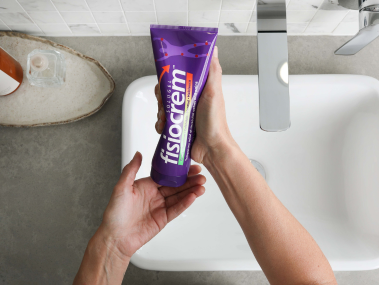
Immediate and long-lasting Effects of fisiocrem's muscle pain relief gel
Pain Reduction
The trial revealed that fisiocrem Solugel provides immediate relief from musculoskeletal pain. Users reported a noticeable reduction in pain within minutes of application, offering a reliable solution for muscle pain relief.
Reduce Inflammation
Alongside pain reduction, the natural components of fisiocrem Solugel help to reduce inflammation and improve the healing of minor body tissue injuries.
Recovery Perception
The cream showed sustained benefits over two weeks, leading to a considerable reduction in pain and an enhanced perception of recovery.
What Sets fisiocrem Solugel Apart? A top muscle pain relief gel in the market.
The Key Ingredients
fisiocrem Solugel offered both immediate relief and sustained benefits with continued use in reducing pain and stiffness. Arnica, Hypericum, Calendula, Melaleuca, and menthol, work together to manage musculoskeletal pain.
Arnica & Menthol Symphony
Menthol and Arnica together provide relief by reducing pain, improving blood flow, reducing inflammation, and promoting tissue repair.
Conclusion
The study’s findings underscore the sustained effectiveness of fisiocrem Solugel with continued use.. The topical formulation not only addresses immediate pain but also contributes to prolonged recovery. This makes it a valuable solution for both immediate relief and extended pain management.
fisiocrem Solugel offers a user-friendly application, allowing individuals to apply the cream to affected areas with ease.
fisiocrem Solugel - Muscle Pain Relief Gel
Discover the power of fisiocrem Solugel in pain management. Made from menthol and naturally derived active ingredients, this solution provides quick and long-lasting relief for muscle pain.
As you embark on a journey to well-being, remember to always read the label and follow the directions for use. Embrace a holistic approach to pain relief by incorporating fisiocrem Solugel into your daily routine. Elevate your comfort and recovery—click “Shop Now” and experience the soothing benefits of fisiocrem Solugel today.

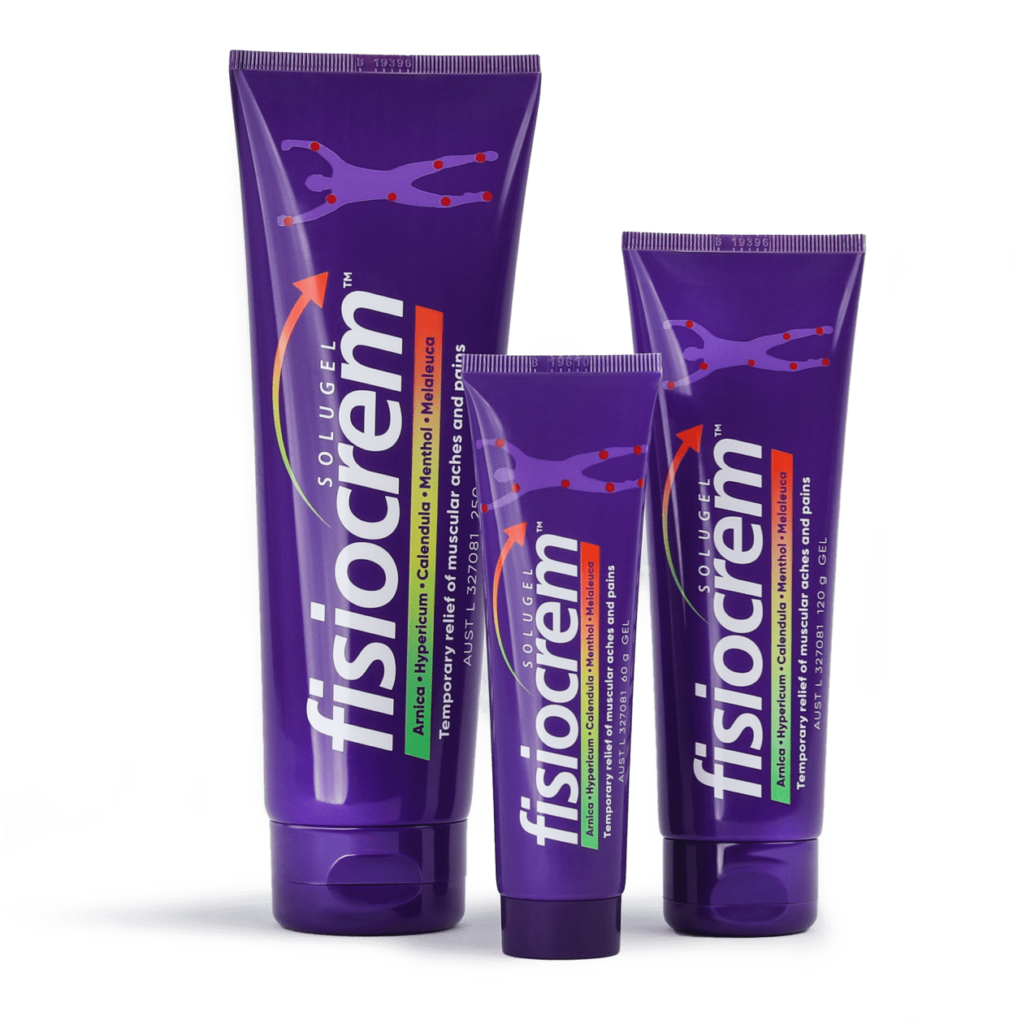
Citations
- Ramon et al Ortho & Rheum Open Access J 20(1): OROAJ.MS.ID.556028 (2022) This study was funded by fisiocrem.
Meet fisiocrem sponsored athlete Bridgette, the ultimate South Australian Parkrun enthusiast who’s a busy mum and manages to get in her training each week.
Bridgette has a passion for running, regularly participating in Parkrun every Saturday and eagerly registering for various running events throughout the year in Australia.
In 2018, Bridgette successfully completed the New York Marathon. A passing conversation in January of that year with her cousin sparked the idea of running a marathon, and within three weeks, they both signed up for the event. Despite never having run farther than the 12km City 2 Bay event in Adelaide, Bridgette, who thrives on challenges, embraced the task. In May of the same year, she conquered her first half marathon, finding it incredibly challenging but relishing the sense of accomplishment at the finish line. Bridgette continued her training until late October when she travelled to New York to participate in the Marathon on November 4th, an experience she describes as the highlight of her running journey.
Having sustained a femur fracture in late 2021, Bridgette found solace in returning to regular running in 2023. Setting her goals early, she acknowledges that while she hasn’t fully regained her pre-injury performance, she has made substantial improvements following such a significant setback. Bridgette recognises the importance of consistency, prioritising both recovery time and exercise to achieve her objectives. She has also learned to be kind to herself, embracing the inevitable challenges on the journey and understanding that “bad” days are an integral part of the process.
In 2024, Bridgette aims to expand her distance running, aspiring to complete one or two additional half marathons. Additionally, she has set her sights on conquering an inaugural trail running event. Demonstrating dedication, Bridgette maintains consistency in her running routine while delving into more intensive strength training. Recognising the importance of holistic well-being, she allocates time for recovery, stretching, and overall self-care, prioritising the health of both her body and mind.
Bridgette’s biggest supporters are her two teenage sons. She says “My 15-year-old is excelling in his running and helps to keep me motivated for the next event. We often cross the finish line together to create a cherished memory.”
BRIDGETTE’S TOP RECOVERY TIPS
Bridgette’s top recovery tips are “Be kind to yourself, listen to your body and don’t feel bad for needing a rest.”
Bridgette Barendregt
The sacroiliac joint (SIJ) is where the lower spine and pelvis meet and it is the largest axial joint in the body (Forst. et al., 2006). These joints play a pivotal role in providing stability and absorbing shock when you move (Cohen, 2005). However, when these joints become inflamed or misaligned, they can lead to discomfort and pain, affecting your daily activities.
This blog will discuss pain in the SI joint, effective exercises, sleeping positions, and the best pain relief for joint pain.
The Complexity of Sacroiliac Joint Pain:
SI joint pain tends to be difficult to distinguish from other forms of lower back pain (Vanelderen et al., 2011). Diagnosing SI joint pain is hard because symptoms are similar to common causes of back pain (Dreyfuss et al., 2004). SI joint pain often manifests as lower back pain and can radiate into the buttocks and upper thighs (Cohen 2005).
The SIJ transfers large bending movements and compression loads to the lower extremities of the body (Cohen 2005).
Various factors can cause SIJ pain. These include movement, pressure, strong forces, fractures, soft tissue injury, inflammation, pregnancy, disease, leg length, and previous lumbar issues (Kiapour et al., 2020).
Pregnancy increases the chances of females experiencing SIJ pain. This is because of several factors such as weight gain, posture changes, childbirth trauma, and hormonal changes that affect the joints (Cohen 2005).
The sacrum of the female pelvis is wider, less curved, more uneven and has a backward tilt in comparison to the male sacrum. Women exhibit higher mobility, stresses/loads, and pelvis ligament strains (Kiapour et al. 2020).
Inflammation of one or both of the SIJs is an early and prominent symptom of SIJ pain (Cohen 2005).
Treatment options
Treatment of SI joint pain is a challenging problem for physicians today. Some treatment options include physical therapy, manual therapy, bracing, and injections (Dreyfuss et al., 2004).
Shoe Inserts:
Shoe inserts help distribute weight evenly on SI joints for people with different leg lengths. People with uneven leg lengths often adjust their posture to compensate for the difference in length. (Kiapour et al., 2020).
Practitioner assistance
Physical therapy, osteopathic or chiropractic manipulation can help to reduce pain and improve mobility (Cohen 2005).
Stretching and strengthening exercises
Strengthening Exercises for SI Joints:
Gentle exercises can strengthen the muscles supporting the SI joints, promoting stability and reducing pain. Pelvic tilts, bridges, and gentle yoga stretches can be beneficial. Always consult with a healthcare professional or a physiotherapist before starting a new exercise regimen. Discover Sacroiliac joint exercises.
SI Joint Pain Exercises to Avoid:
While exercise is crucial for joint health, certain exercises can worsen SI joint pain. Steer clear of intense twisting motions, heavy lifting, and high-impact activities. Instead, focus on low-impact exercises like swimming and walking to promote flexibility without straining your joints.
Sleeping Position sacroiliac joint pain relief
Your sleeping position can impact SI joint pain. Opt for sleeping on your back with a pillow under your knees to reduce pressure on your SI joints. Avoid stomach sleeping, as it can strain these joints and aggravate pain.
Bracing
Using pelvic belts can help stabilise the pelvis and limit rotation of the Si joint in pregnant women (Cohen 2005).
Injections
Clinical studies have demonstrated significant pain relief after both intraarticular and periarticular SI joint injections (Cohen 2005).
Anti-inflammatories
Over-the-counter anti-inflammatory drugs can help relieve inflammation in the affected joint area. You can apply topical Joint pain relief creams to the affected joint area to help relieve joint pain and inflammation.
fisiocrem Joint Ease - Topical Anti-inflammatory cream for joint pain relief.
fisiocrem Joint Ease is a topical anti-inflammatory solution that provides temporary relief for symptoms associated with mild arthritis, mild osteoarthritis, as well as joint pain.
Crafted with menthol and naturally derived active ingredients, including Nigella and Boswellia. Our joint pain cream offers temporary relief, promoting comfort and flexibility.
fisiocrem Joint Ease provides relief for your specific needs. It helps you live a more active and pain-free life. Whether you have mild arthritis or want to reduce joint pain, this product can assist you.
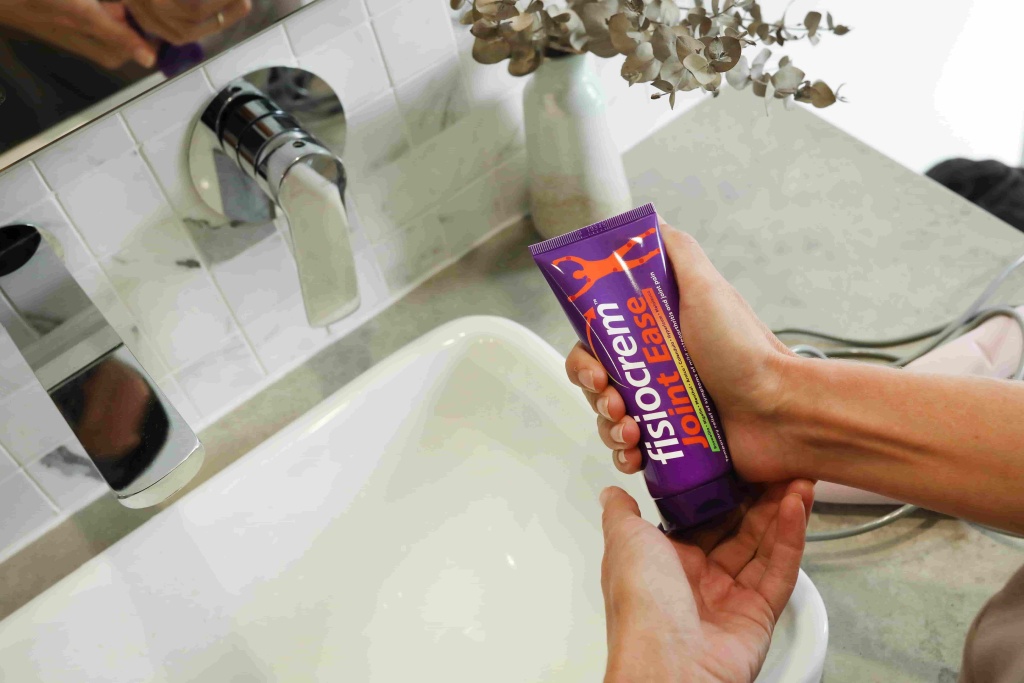
Conclusion
Understanding sacroiliac joint pain and adopting the right strategies for relief is crucial for maintaining a healthy, active lifestyle. You can greatly improve your joint health by taking proactive steps. These steps include choosing the right sleeping position, avoiding certain exercises, and using fisiocrem’s Joint Pain Relief Cream.
FAQs – Your Guide to Sacroiliac Joint Wellness:
1. What is the best pain relief for sacroiliac joint pain?
fisiocrem’s Joint Pain Relief Cream is a topical joint pain relief option. Its active ingredients provide temporary pain relief for joint pain whilst helping to reduce inflammation, making it a safe option for managing joint pain.
2. Can facet joint pain go away on its own?
Mild facet joint pain may improve with rest and gentle exercises. However, persistent or severe pain may require medical attention. Consult with a healthcare professional for personalised advice.
3. Why do I experience knee joint pain when bending?
Knee joint pain when bending may result from various factors, including issues with the patella, meniscus, or even referred pain from the sacroiliac joints. Consult a healthcare professional for an accurate diagnosis and appropriate treatment.
4. How to sit with SI joint pain
To sit comfortably with SI joint pain, use a firm chair with proper lumbar support. Keep your knees at hip level and feet flat on the floor. Avoid crossing your legs and take short breaks to stretch.
Engage your core muscles for added support. If pain persists, consult a healthcare professional for personalised advice.
Citations
- Cohen, S. (2005). Sacroiliac Joint Pain: A Comprehensive Review of Anatomy, diagnosis, and treatment. Anesthesia & Analgesia. 101(5) 1440-1453.
- Dreyfuss, P., Dreyer, S., Coles, A., Mayo, K. (2004). Sacroiliac Joint Pain : JAAOS – Journal of the American Academy of Orthopaedic Surgeons. 12(4) 255-265.
- Forst, S., Wheeler, M., Fortin, J., Vilendky, J. (2006). The Sacroiliac Joint: Anatomy, Physiology and clinical significance. 9(1) 61-68.
- Kiapour, A., Joukar, A., Elgafy, H., Erbulut, D. U., Agarwal, A. K., & Goel, V. K. (2020). Biomechanics of the Sacroiliac Joint: Anatomy, Function, Biomechanics, Sexual Dimorphism, and Causes of Pain.
- Vanelderen, P., Szadek, K., Cohen, S. P., De Witte, J., Lataster, A., Patijn, J., Van Zundert, J. (2011). Evidence‐Based Interventional Pain Medicine, 96–102.
Meet Isaiah, a fisiocrem sponsored athlete who juggles the roles of a part-time triathlete, running vlogger, and a proud father of two children. His passion lies in running, triathlon, and overall fitness.
Running holds a special place as his preferred method of staying active, but he consistently incorporates biking and swimming into his routine to ensure he can sustain a decent level of performance in these two disciplines. He says, “There are so many different running trails here in Toowoomba.”
In 2014, Isaiah received a diagnosis of Hodgkin’s Lymphoma. During his treatment, he was fortunate to sustain a decent level of fitness. Having just embarked on his triathlon journey before the diagnosis, he remained resolute in his determination to return to racing as swiftly as possible. He then embarked on an intensive six-month training regimen with his local Triathlon Club. He says, “My goal was to compete in the Hell Of The West Triathlon once I returned.”
This December, Isaiah had the fisiocrem GC50 Run Festival. It marked the longest-running event he had participated in to date. He diligently ensured that his training remained consistent and focused to guarantee his endurance throughout the race.
Isaiah’s wife and his two daughters provide him with unwavering support, consistently offering encouragement and cheering him on during race days. He says, “Between their encouragement and a group of great mates that are always keen to join me for a run, I’m always happy to be out racing.”
ISAIAH’S TOP RECOVERY TIPS
Isaiah says, “I love a long hot soak in a magnesium bath followed by some massage with a foam roller, massage gun and lacrosse ball. So I can stay warm and recover quickly.”
"Being out training and competing always brings me joy."
Isaiah
Ankle and foot pain can be a hindrance to our daily activities. Many people can experience ankle and foot pain when walking, running or even experience sudden ankle pain without injury or swelling. This affects an individual’s mobility and overall well-being. Understanding the various types and causes of such pain is crucial for effective management and prevention.
Common causes of Ankle pain
Ankle pain can stem from various causes, each demanding unique attention and care. Some common causes include:
- Injury: Sprains, strains, or fractures resulting from twists, falls, or impacts.
- Overuse: Excessive strain on the ankle because of prolonged physical activity or repetitive motion.
- Mild Arthritis & Mild Osteoarthritis: Inflammatory joint conditions.
- Infections: Bacterial or viral infections affecting the ankle joint or surrounding tissues.
Preventing Ankle Pain
Taking steps to prevent ankle issues is as important as treating existing problems. Strengthening training exercises can reduce repetitive ankle sprains. Doing regular strength exercises can lower the chance of recurring injuries, lessen pain, and improve flexibility (Van Reijen et al, 2017).
Home Remedies for Ankle Pain
Some simple yet effective remedies for treating ankle pain or an ankle sprain at home include:
- RICE method – Rest, Ice, Compression, Elevate. Rest the ankle, elevate the leg, and apply ice to the affected area to help reduce swelling and numb the pain.
- Gentle Exercises – Engage in gentle exercises like ankle rotations and flexion and extension movements to improve flexibility and strengthen the muscles around the joint.
- Topical anti-inflammatory creams and gels like fisiocrem Solugel and fisiocrem Joint Ease.
If the pain gets worse, see a healthcare professional for personal advice.
Relieving Swollen Feet and Ankles
Edema is swelling in the ankles and feet and typically arises from injury or inflammation (Voice Dart, 2015). You can reduce swelling in the feet and ankles in a couple of ways.
- Elevate your legs above your heart to improve blood flow and decrease swelling.
- Applying a cold compress or ice pack to the affected area for short intervals can also help alleviate inflammation.
- Engage in gentle exercises, such as ankle rotations or toe stretches, to stimulate blood flow and prevent stiffness.
- Consider wearing compression socks to promote better circulation and reduce swelling.
- Drinking enough water and eating less salt can keep the body’s fluid levels in balance and prevent swelling.
If swelling continues or gets worse, it’s important to see a doctor to determine why and get the right treatment.
Ankle Strengthening Exercises
Enhancing the strength and stability of your ankles can help prevent injuries and promote overall joint health. For example experts recommend a mix of Isometric and dynamic resistance exercises to build ankle strength (Wolfe et al, 2001). Simple exercises like toe raises, toe curls and resistance band exercises like lateral leg raises (Wolfe et al, 2001). Engage in targeted exercises to strengthen your ankles and improve overall flexibility.
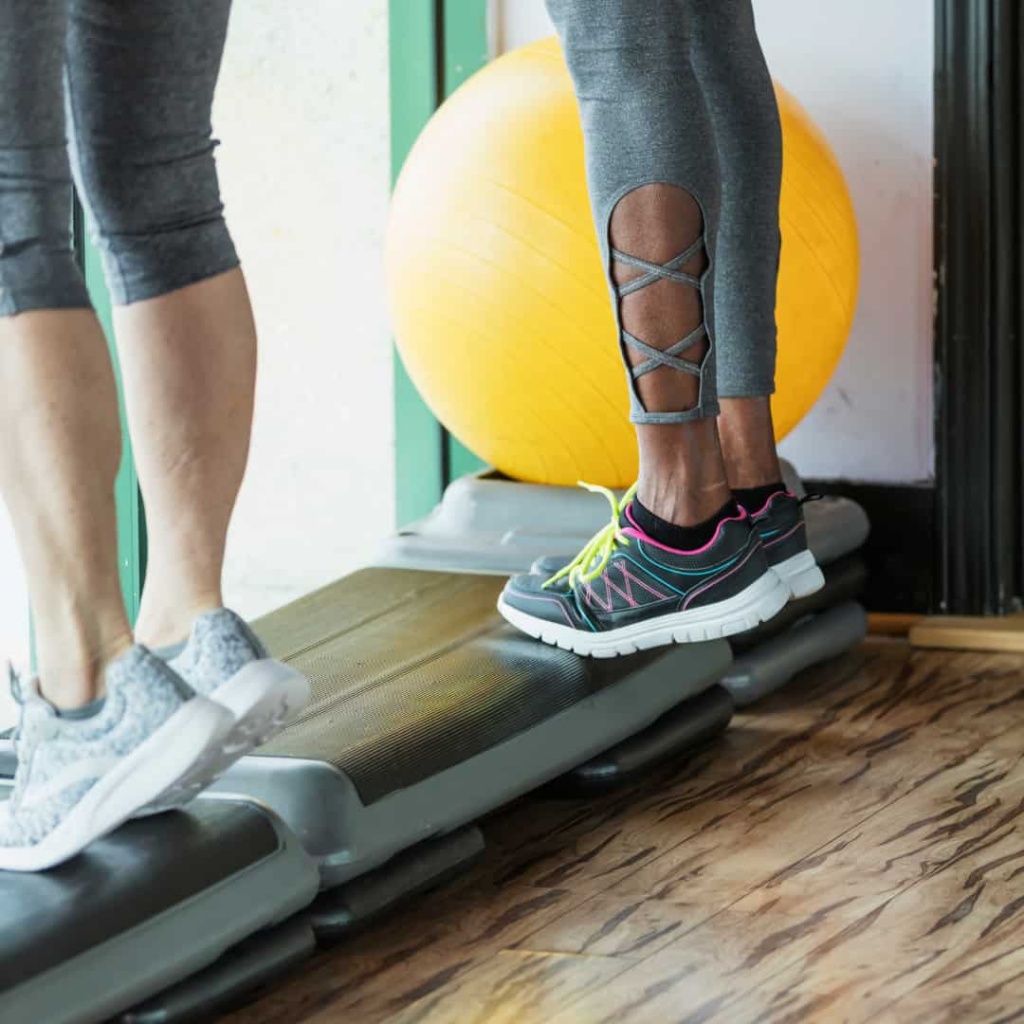
Mild Arthritis in the Foot and Ankle
Mild arthritis in the foot and ankle can greatly affect a person’s ability to use their foot and ankle. They may experience stiff ankles, reduced range of motion and experience pain (Abdo & Iorio, 1994). Foot problems can impact many aspects of one’s life from physical, social and emotional well-being (Wilson et al, 2019).
Mild Osteoarthritis of the Foot and Ankle
Foot and ankle mild osteoarthritis (OA) is a common and disabling problem that affects one’s physical function and quality of life (Paterson & Gates, 2019). Trauma is a common cause of mild osteoarthritis in the ankle (Ewalefo et al, 2018).
Ways to lessen pain from mild osteoarthritis include exercising, losing weight, using anti-inflammatory creams, and taking NSAIDs (Paterson & Gates, 2019).
fisiocrem Solugel
fisiocrem Solugel is a topical anti-inflammatory gel, that assists in the management of muscle sprains and strains. fisiocrem Solugel helps relieve symptoms of muscle injury and helps stimulate blood flow to the skin.
fisiocrem Joint Ease
fisiocrem Joint Ease helps relieve mild osteoarthritis, mild arthritis, and joint pain, including ankle pain. This formula helps reduce pain, inflammation, and swelling, giving relief to people with joint problems. fisiocrem Joint Ease has key active ingredients that help people move easily and enjoy an active life.

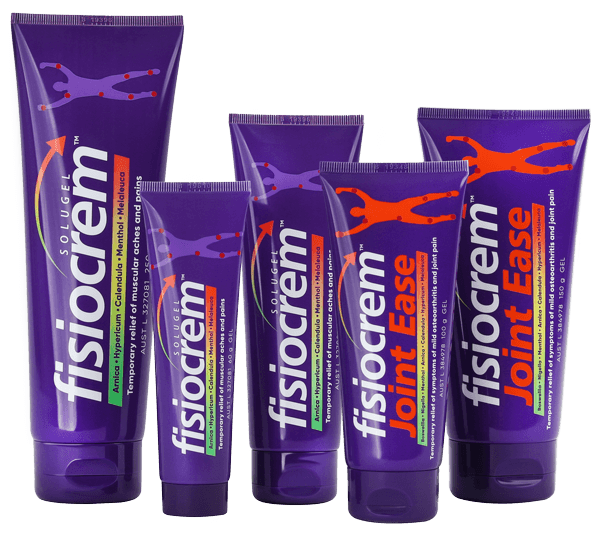
When to See a Doctor for Ankle and Foot Pain
Above all you should seek the advice of your general practitioner should you experience persistent or escalating ankle or foot pain. Especially when swelling, redness, or difficulty in weight-bearing accompanies this pain.
If you experience prolonged pain or injury, it is crucial to consult a healthcare professional. They can check for any serious problems and provide the appropriate treatment promptly.
Conclusion
In conclusion, understanding and addressing ankle and foot pain is essential for maintaining a healthy and active lifestyle. To lessen the impact of discomfort on daily life, individuals should take preventive measures, notice warning signs, and seek treatment promptly.
FAQs on Ankle and Foot Pain
1. Does ice help ankle pain?
Yes, applying ice can help reduce swelling and inflammation whilst numbing the pain in the affected area.
2. Is ice or heat better for ankle pain?
Both have their benefits:
Heat therapy can help provide short-term reductions in pain and increase blood flow to the affected area (Malanga et al, 2014).
Cold therapy following acute musculoskeletal injuries such as sprains and strains can help relieve swelling and reduce inflammation (Hocutt et al, 1982). Rest, Ice, compression, and elevation (RICE) is a method for treating inflammation after an acute ankle sprain (Van den Bekerom et al, 2012).
3. Why do I get ankle pain after running?
Many runners have injuries that occur below the knee. Foot problems are the most common injuries reported among long distance runners(Barr et al 2005). Overuse accounts for most foot injuries. Rest and rehabilitation can often resolve these injuries, which can present significant pain (Kindred et al, 2011.
Ankle sprains are common in runners because of damage to the ankle ligaments (Arnold & Moody, 2018). Running can strain the ankles; therefore proper warm-up, appropriate footwear, and gradual intensity increase can help prevent pain.
4. How to strap an ankle?
Proper strapping can provide mild ankle support and help ease ankle discomfort. Rocktape is a tape that is easy to use. If pain persists, see your health care professional for further advice.
5. Can ankle pain be a sign of a more serious condition?
Yes, persistent or severe ankle pain may indicate underlying issues such as fractures, ligament damage, or mild arthritis. Consult a healthcare professional for a thorough evaluation.
6. What are the long-term effects of untreated ankle pain?
Untreated ankle pain can lead to chronic issues, affecting mobility and overall quality of life. Seeking timely medical attention is crucial for preventing long-term complications.
7. How can I relieve ankle pain without medication?
To ease ankle pain without medicine, try the RICE method, do gentle exercises, and use pain relief creams and gels.
8. Are there specific shoes that can prevent ankle pain?
Choosing footwear with proper arch support and cushioning can help prevent ankle pain, especially during physical activities.
9. Are there exercises to prevent ankle stiffness?
Doing ankle exercises and rotations regularly can prevent stiffness and improve flexibility and range of motion.
Citations
- Abdo, R., Iorio, L. (1994). Journal of the American Academy of Orthopaedic Surgeons, 2 (6) 326-333
- Arnold, M., Moody, A. (2018). Common Running Injuries: Evaluation and Management. Am Fam Physician, 97(8) 510-516
- Barr, K., Harrast, M. (2005). Evidence-Based Treatment of Foot and Ankle Injuries in Runners. Physical Medicine & Rehabilitation Clinics.
- Ewalefo, S., Dombrowski, M., Hirase, T., Rocha, J., Weaver, M., Kline, A., Hogan, M. (2018). Literature Review. Current Reviews in Musculoskeletal Medicine, 11(4), 546–557.
- Hocutt, J., Jaffe, R., Rylander, R., & Beebe, K. (1982). Cryotherapy in ankle sprains. The American Journal of Sports Medicine, 10(5), 316–319.
- Kindred, J., Trubey, C., Simons, S. (2011). Foot Injuries in Runners. Current Sports Medicine Reports, 10(5) 249-254.
- Malanga, G., Yan, N., & Stark, J. (2014). Mechanisms and efficacy of heat and cold therapies for musculoskeletal injury. Postgraduate Medicine, 127(1), 57–65.
- Paterson, K., & Gates, L. (2019). A Review of Current Evidence and Focus on Pharmacological Treatment. Drugs and aging, 36(3), 203–211.
- Van den Bekerom, M., Struijs, P., Blankevoort, L., Welling, L., van Dijk, N., & Kerkhoffs, G. (2012). What Is the Evidence for Rest, Ice, Compression, and Elevation Therapy in the Treatment of Ankle Sprains in Adults? Journal of Athletic training, 47(4) 435-443.
- Van Reijen, M., Vriend, I., Zuidema, V., Van Mechelen, W., Verhagen, E. (2017). The “Strengthen your ankle” program to prevent recurrent injuries: A randomized controlled trial aimed at long-term effectiveness. Journal of Science and medicine in sport, 20(6) 549 – 554.
- Voice Dart, J. (2015). Edema – Natural Prevention and Treatment of Swollen Joints. Retrieved from https://montereybayholistic.wordpress.com/2015/05/15/edema-swollen-joints/
- Wilson, O., Kirwan, J., Dures, E., Quest, E., & Hewlett, S. (2017). Journal of Foot and Ankle Research, 10(1).
- Wolfe, M., Mattacola, C., Mccluskey, L. (2001). Management of Ankle Sprains. Am Fam Physician, 63(1) 93-105.
Wholesale & Practitioners
fisiocrem Australia is devoted to helping you manage your pain, and we have been since 2009. We develop high-quality topical pain relief products that stop pain from interfering with your regular activity.
Are you visiting from New Zealand?
Visit fisiocrem New Zealand here

